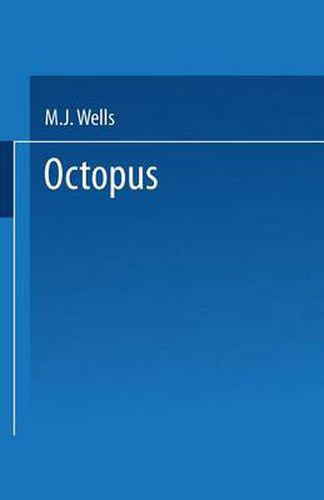Readings Newsletter
Become a Readings Member to make your shopping experience even easier.
Sign in or sign up for free!
You’re not far away from qualifying for FREE standard shipping within Australia
You’ve qualified for FREE standard shipping within Australia
The cart is loading…






This title is printed to order. This book may have been self-published. If so, we cannot guarantee the quality of the content. In the main most books will have gone through the editing process however some may not. We therefore suggest that you be aware of this before ordering this book. If in doubt check either the author or publisher’s details as we are unable to accept any returns unless they are faulty. Please contact us if you have any questions.
between the organ systems of cephalopods and those of less ambitious molluscs. Octopus does, as we would predict, live close to the limits set by its own physiology. The circulation, to take one example, is barely adequate for such an active animal, mainly because of the absence of any system for pack aging the blood pigment; haemocyanin in solution is a poor oxygen carrier. Cephalopod blood can transport less than 5 millilitres of oxygen per 100 ml of blood (compared with about 15 vol% in fish) and the whole supercharged system of triple hearts, high blood pressure and pulsating blood vessels succeeds only in returning blood that retains less than 30% of its dissolved oxygen by the time it reaches the gills. This at rest; the effect of exercise is immediate and surprisingly long lasting even in octopuses as small as 300 g, which must very swiftly run into oxygen debt when they flee from predators or pursue their prey (Sections 3.2.2, 3.2.4). Digestion, too would seem to be limiting. As with other molluscs, digestion in Octopus is based on secretion absorption cycles by a massive diverticulum of the gut, an adequate system in a less hectic past, but scarcely appropriate in a predator that must be an opportunist in the matter of feeding. Octopus feeds mainly at night, and spends a great deal of every day sitting at home.
$9.00 standard shipping within Australia
FREE standard shipping within Australia for orders over $100.00
Express & International shipping calculated at checkout
This title is printed to order. This book may have been self-published. If so, we cannot guarantee the quality of the content. In the main most books will have gone through the editing process however some may not. We therefore suggest that you be aware of this before ordering this book. If in doubt check either the author or publisher’s details as we are unable to accept any returns unless they are faulty. Please contact us if you have any questions.
between the organ systems of cephalopods and those of less ambitious molluscs. Octopus does, as we would predict, live close to the limits set by its own physiology. The circulation, to take one example, is barely adequate for such an active animal, mainly because of the absence of any system for pack aging the blood pigment; haemocyanin in solution is a poor oxygen carrier. Cephalopod blood can transport less than 5 millilitres of oxygen per 100 ml of blood (compared with about 15 vol% in fish) and the whole supercharged system of triple hearts, high blood pressure and pulsating blood vessels succeeds only in returning blood that retains less than 30% of its dissolved oxygen by the time it reaches the gills. This at rest; the effect of exercise is immediate and surprisingly long lasting even in octopuses as small as 300 g, which must very swiftly run into oxygen debt when they flee from predators or pursue their prey (Sections 3.2.2, 3.2.4). Digestion, too would seem to be limiting. As with other molluscs, digestion in Octopus is based on secretion absorption cycles by a massive diverticulum of the gut, an adequate system in a less hectic past, but scarcely appropriate in a predator that must be an opportunist in the matter of feeding. Octopus feeds mainly at night, and spends a great deal of every day sitting at home.